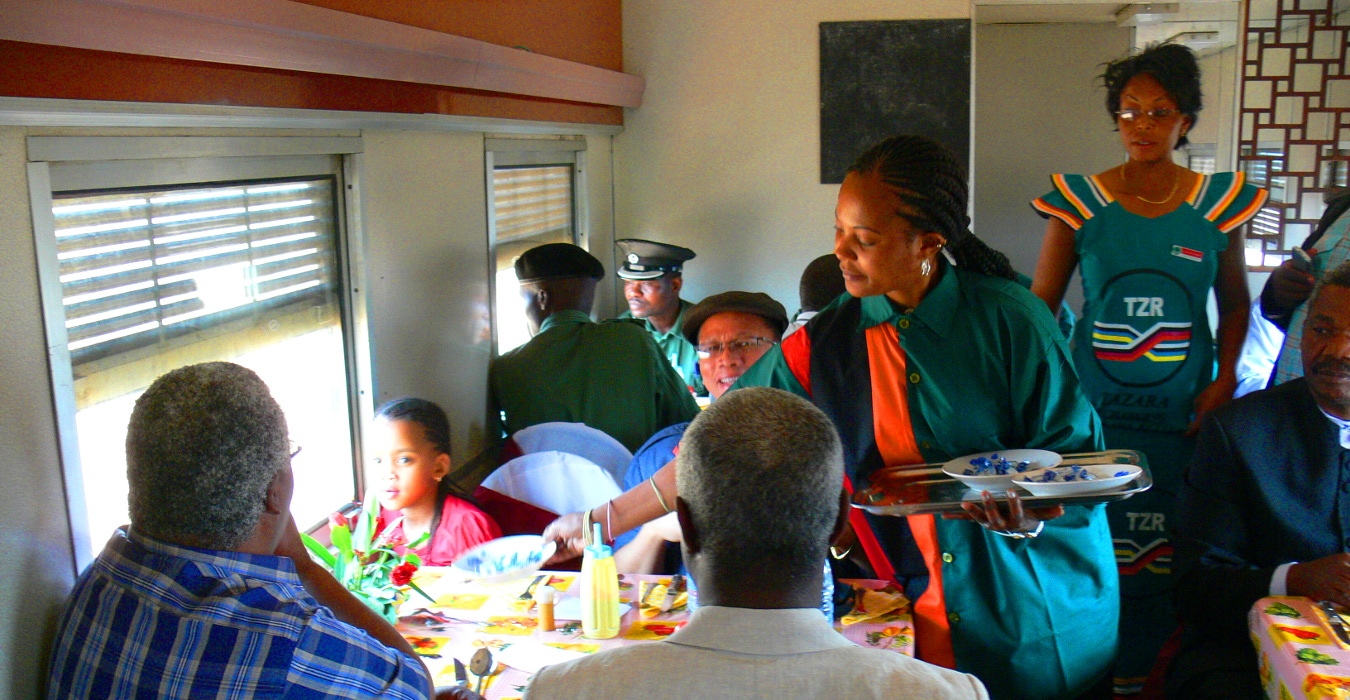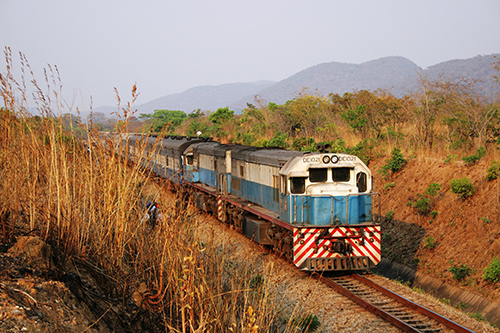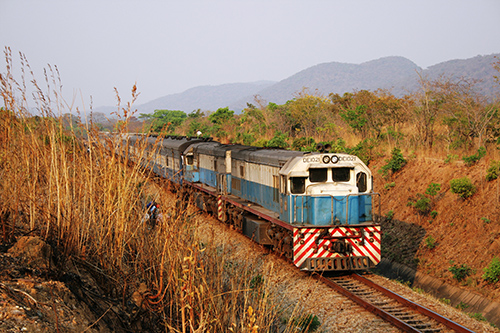In 1970, the leaders of independent Tanzania and Zambia began construction of the TAZARA Railway, also known as the Uhuru Railway. It plowed a route from the Tanzanian port city of Dar es Salaam to the copper belt in central Zambia. President Julius Nyerere and Kenneth Kaunda hoped to provide a free passage for people and goods out of rebel-held Southern Rhodesia (now Zimbabwe) and South Africa. Hence the name, the Freedom Railway.

Today, the railway remains a lifeline for hundreds of communities along its route. Farmers growing corn, rice, and tomatoes transport their produce to markets in towns and cities, while merchants bring consumer goods back to the countryside. Because of the railway, many small villages have grown into large cities.

The train was a veritable marketplace. It had 100-odd stops, and at each stop, passengers leaned out to buy large bunches of bananas and tried to get them in through the narrow windows. Street vendors selling things like plastic slippers and soft drinks tried their luck in the corridors.

TAZARA station stands amid a patchwork of tin domes on the outskirts of Dar es Salaam. Although cracks have begun to appear on the facade, the building appears little changed since it was first built. In front of the swinging wooden doors, ticket inspectors punch ticket stubs. Large packages are weighed in the parcel shed. At 1 p.m., the platform doors suddenly open and crowds rush forward in the hope of getting window seats.

Setting off, the train speeds out of Dar es Salaam and through tropical farmland, entering the Selous Game Reserve just as the sun sets. In the distance, antelopes, baboons and giraffes can be seen.
The view upon waking was truly astonishing. Mist shrouded the temperate forest as the train wound its way up steep hills and through deep valleys. During the night, the train climbed 600m as it pushed into the Great Rift Valley. This was noted by TAZARA engineers during construction, who had to blast their way through the largest mountain with explosives.
In 1964, mainland Zambia (then known as Northern Rhodesia) gained independence from Britain and regained control of its mineral resources. However, neighboring Southern Rhodesia was hostile and imposed heavy taxes on copper shipped to southern African ports. As a result, Presidents Kaunda and Nyerere agreed to build the Uhuru Railway and open up economic freedom to northern Zambia.

Chairman Mao Zedong offered a $400 million loan to build the railway. And soon, tens of thousands of Chinese railway workers moved to East Africa. This was China's first major engineering project in Africa.
The train travels relentlessly, climbing 1,800m above sea level through the hills around the Tanzanian city of Mbeya before descending across the Zambian border. Communities along the line have relied on it for more than 40 years, taking their children to school and funerals by train.
Sadly, the train is aging and becoming dangerous. “You need to keep your wits about you and think carefully,” says Charles Siame, pushing the diesel engine out of the station. He has been driving since 1983, but since then the railway has begun to deteriorate. “We have limited the speed to 40km/h due to some problems with the carriages.”

With the steady increase in passenger and freight rail traffic, coupled with increased activity at the Dar es Salaam port, combined with its cheap, reliable nature, the TAZARA line has room for growth. The Chinese government is expected to support the renewal of the line with loans and new equipment.
Ngoc Anh (According to BBC Travel)


































